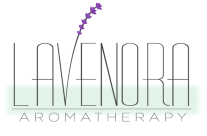History
Rosemary was part of the "Marseilles Vinegar" or "Four Thieves Vinegar" used by grave-robbing bandits to protect themselves during the 15th century plague. The name of the oil is derived from the Latin words for dew of the sea (ros + marinus). According to folklore history, rosemary originally had white flowers; however, they turned red after the Virgin Mary laid her cloak on the bush. Since the time of ancient Greece (about 1,000 B.C.), rosemary was burned as incense. Later cultures believed that it warded off devils, a practice that eventually became adopted by the sick who then burned rosemary to protect against infection.
It was listed in Hildegard's Medicine, a compilation of early German medicines by highly-regarded Benedictine herbalist, Hildegard of Bingen (1098-1179).
Until recently, French hospitals used rosemary to disinfect the air.
It was listed in Hildegard's Medicine, a compilation of early German medicines by highly-regarded Benedictine herbalist, Hildegard of Bingen (1098-1179).
Until recently, French hospitals used rosemary to disinfect the air.
AromaCamphoraceous, fresh, herbaceous
|
NoteTop / Middle
|
ProductionSteam distilled from leaves
|
Common Uses
- Infectious disease
- Liver conditions e.g. hepatitis
- Throat / Lung infections
- Hair loss (alopecia areata)
- Impaired memory, e.g. Alzheimers
Properties
anti-tumoral, anti-fungal, antibacterial, antiparasitic, enhances mental clarity / concentration
Emotional Healing
Rosemary assists those who are struggling from learning disabilities. It aids in times of transition and change, and when we need to see the bigger picture. It aids with confusion and ignorance.
Application
Dilute with any vegetable oil and apply 1-2 drops on your feet or your chakras.
Inhale or diffuse it directly out of the bottle for an uplifting experience.
Inhale or diffuse it directly out of the bottle for an uplifting experience.
Caution
May cause skin irritation.
Use caution (best to avoid!) to use when suffering from epilepsy, high blood pressure, and being pregnant.
Avoid at nighttime as it functions as a stimulant.
Use caution when using on children! Always dilute and only use 1% or less (5-6 drops for 1 ounce of carrier oil or cream).
Use caution (best to avoid!) to use when suffering from epilepsy, high blood pressure, and being pregnant.
Avoid at nighttime as it functions as a stimulant.
Use caution when using on children! Always dilute and only use 1% or less (5-6 drops for 1 ounce of carrier oil or cream).
References
- Butje, A. Aromahead Institut, USA; http://www.aromahead.com
- Essential Science Publishing. Essential Oil Desk Reference. 4th Edition. USA. 2007.
- Lawless, J. The illustrated encyclopedia of essential oils. Thorson, London, 1995.
- MacDonald, D. Emotional healing with essential oils. Enlighten Alternative Healing, LLC., USA, 2012
- Schnaubelt, K.The healing intelligence of essential oils - The science of advanced aromatherapy. Healing Arts Press, USA, 2011
- Williams, K. Aromatics International, USA; http://www.aromaticsinternational.com

